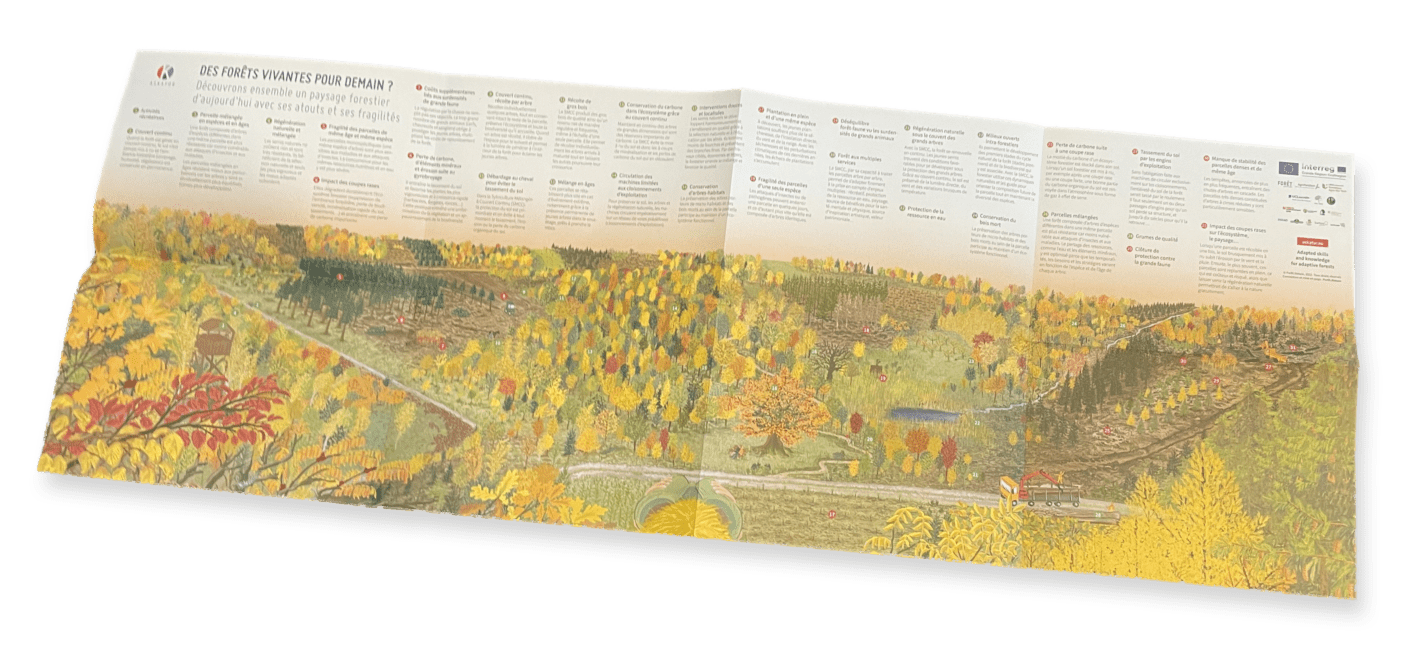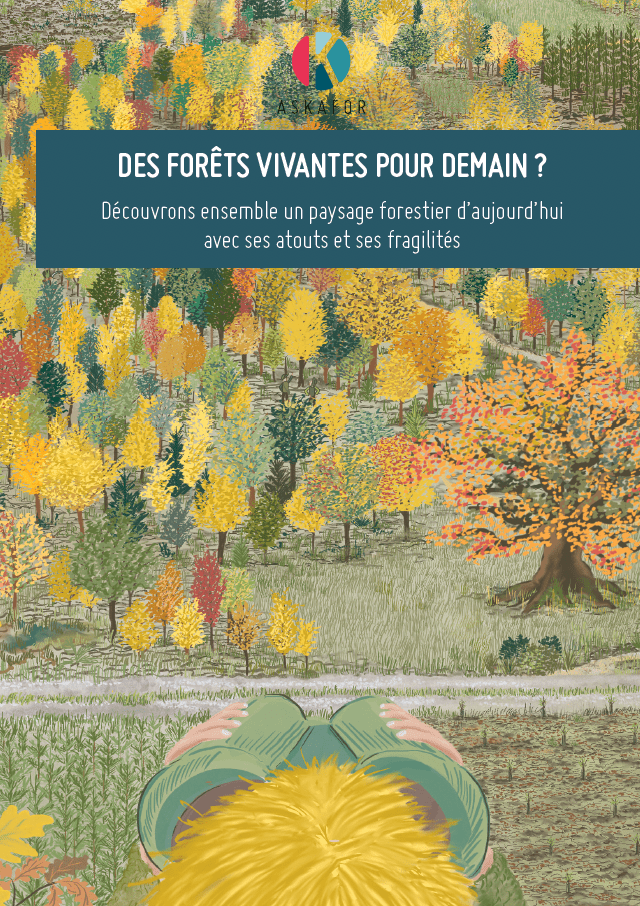Ressources
Nos documents de référence
Une liste de nos ressources techniques, disponible en téléchargement gratuit ou en version papier.

Martelage en traitement irrégulier – Choix sylvicoles et notions associées
Caroline Guillier, Christine Sanchez, Isabelle Van Driessche, Christophe Heyninck (Forêt.Nature)
Le martelage est l’opération la plus importante de la gestion forestière. En traitement irrégulier, peut-être plus que pour n’importe quel mode de gestion, le martelage est l’opération centrale car elle concentre l’ensemble des objectifs, qui se regroupent dans le positionnement puis le maintien des peuplements dans un état d’équilibre, qui permet tout à la fois de produire et de régénérer en continu.
Dans cet ouvrage, la démarche de martelage est décomposée en différentes étapes d’observations et les éléments techniques nécessaires à la compréhension des dynamiques naturelles sont détaillés. Pour chaque élément technique, les aspects pratiques liés au martelage sont mis en avant afin de faciliter la lecture.
Disponible en français, anglais et allemand

Lisières forestières : biodiversité et aménagement
Yolande Collard, Céline Prévot, Marc Dufrêne
L’ouvrage présente le fonctionnement des lisières forestières, ainsi que les bénéfices qu’elles apportent aux écosystèmes et aux activités humaines lorsqu’elles bénéficient d’une surface suffisante pour s’exprimer. Il aborde également les processus de réflexions et les méthodes d’aménagement et d’entretien possibles. Ces techniques pour améliorer la qualité des lisières sont variées et se veulent accessibles à tous, quel que soit le contexte initial. Finalement, des cas concrets, issus du terrain, illustrent quelques-unes des techniques. Ces exemples relatent les adaptations, trucs et astuces imaginés par les gestionnaires au fil de leurs expérimentations.

Continuous Cover Forestry in practice
Christine Sanchez (Forêt.Nature)
Supplemental document to circular no. 2718 of 24.09.2013 relative to silvicultural measures to be adhered to for the practice of Pro Silva forest management.
CCF and irregular silviculture are becoming increasingly popular. But behind the trend, we see the questions, misunderstandings, dissatisfaction, ignorance, aspirations and also the desire to learn from the experience acquired and to seek to define an alternative and sustainable forestry, following a profitable and integrated approach.

Why get into Continuous Cover Forestry?
Forêt.Nature, AgroParisTech, Pro Silva France, Gembloux Agro-Bio Tech (ULiège)
We now know more about the impact of our management choices on limiting health and economic risks, on biodiversity, and on the preservation of soil, water and carbon: this knowledge must guide the decisions of forest owners and managers. In a sector where the time scale exceeds a century, it is important to carefully weigh up our choices that will affect future generations. To adapt to climate change and the societal context, we need to think differently about forest management today.

Reference forest. Vielsam Forest
Bastien Sante (Forêt.Nature)
A reference forest in Continuous Cover Forestry is a forested area that makes it possible to illustrate this type of management in the real world, directly within the ecosystem. It also serves as a site for research, training and discussion. It is monitored using forest inventories, which feed knowledge on CCF and the analyses of a specific area at a specific time, to help determine the resistance and resilience of the forest.

Poster. The future of living forests
Together we discover the strengths and weaknesses of today’s forest landscape with this large educational poster. 42 x 118 cm

Leaflet. The future of living forests
How can we ensure that the forest continues to provide us with its countless ecosystem services in a context of climate change?
In a field where the time scale extends well beyond a century, forestry professionals must now adapt their practices so that future generations can continue to benefit from beautiful and vibrant forests.

